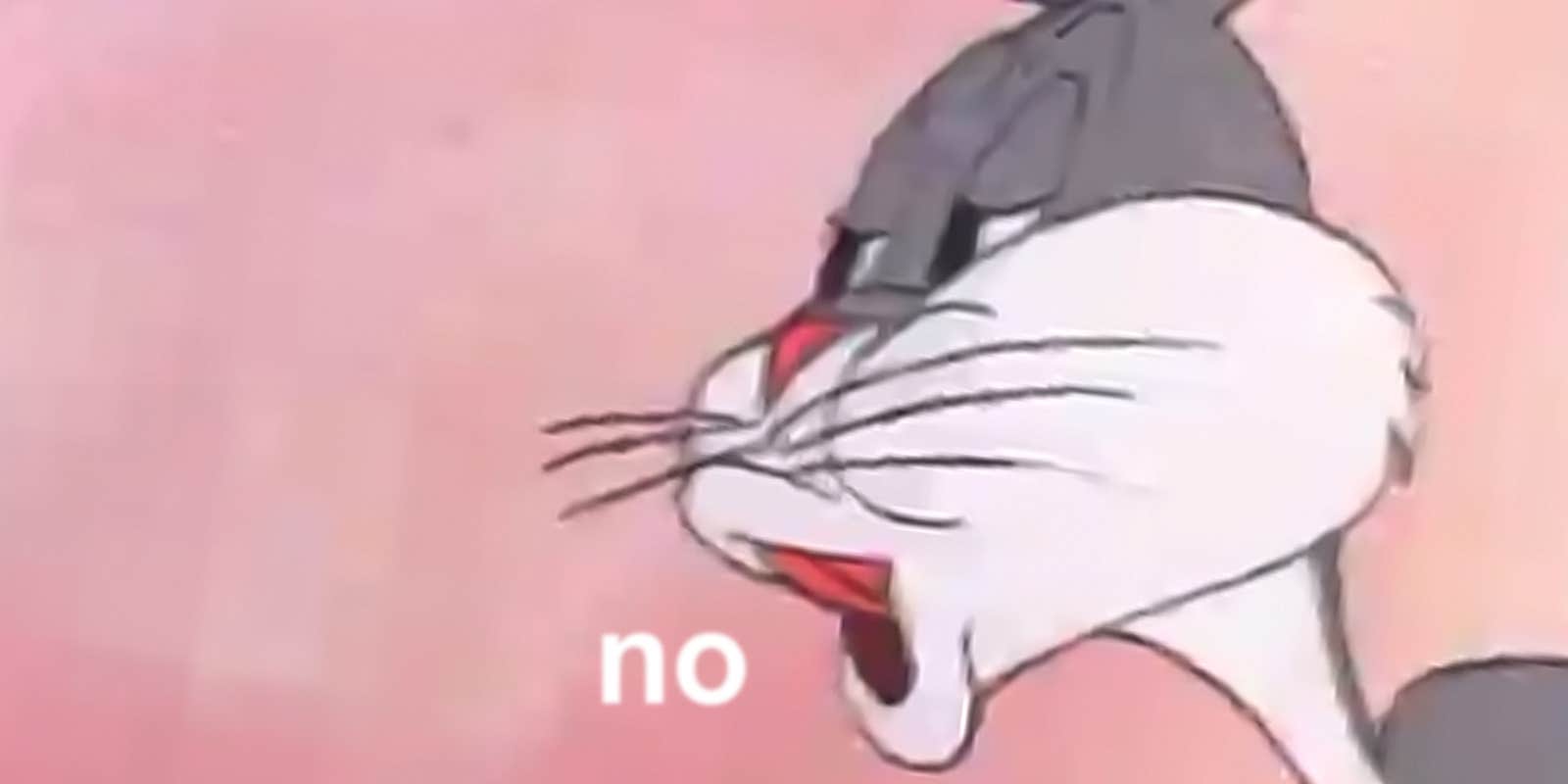The Bugs Bunny “no” meme is a popular reaction image or gif that shows the Looney Toons character leaning over with his tongue touching the roof of his mouth. Bugs is in the process of giving a clear and inarguable “no” to someone nearby, so it often appears alongside this simple caption.
In the episode from which the screenshot came, Bugs was about to drink from a bottle labeled “hare tonic.”
Where did the Bugs Bunny No meme come from?
The image comes from the Looney Toons episode “The Big Snooze,” aired on October 5, 1946. In the cartoon, Elmer Fudd decides to take his power back after being repeatedly tormented by Bugs, tearing up his Warner Bros. contract and going fishing instead. When he falls asleep, Bugs decides to terrorize him in his dreams.
Once inside Fudd’s subconscious, the rabbit continues to mess with him, including dressing him in drag. Later, when the two of them fall off a cliff together, Bugs pulls out a bottle labeled “Hair Tonic (Stops Falling Hare)” and drinks it to save himself. This is the moment from which the iconic screenshot and resulting meme comes.
The first known use of the screenshot was found on a Tumblr blog, with the image rotated to leave Bugs upright, and posted on February 14, 2015. It was occasionally used as a reaction image to make jokes about problematic drinking and related topics.
As time went on, social media users began to zoom in on Bugs’ face to cut out the bottle, most often to make a sex joke. It wasn’t until around April 2019 that the earliest uses of this image with the word “no” right next to the bunny’s mouth began to appear on platforms like Reddit, becoming the meme we know today.
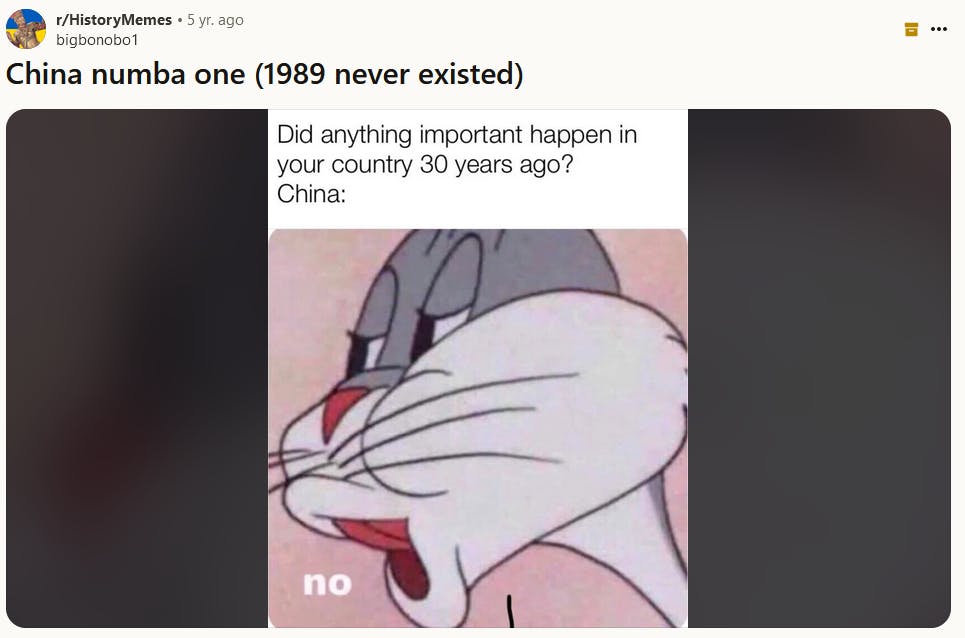
Soon after that, gifs began to appear with the word “no” flashing in the same spot.
Bugs Bunny ‘no’ meme template
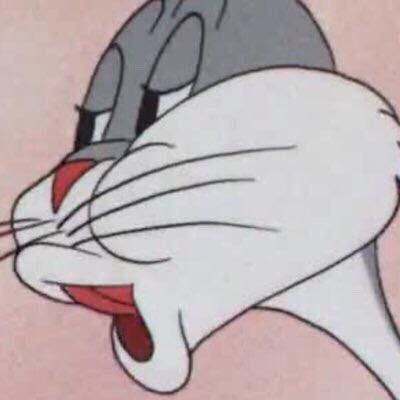
Is Bugs Bunny genderfluid?
The use of drag in the episode “The Big Snooze” is part of a common theme in Bugs Bunny episodes of Looney Toons, though it’s typically the rabbit himself who’s donning the dress.
Bugs uses this gimmick to trick or confuse his antagonists so much that the question of Bugs’ gender has become a frequent topic of online discourse and general speculation.
It was surprisingly common to see cartoon characters in drag, especially male-presenting toons in traditionally feminine clothing, in the 1940s and ’50s. Long before the practice became the target of the modern-day anti-trans panic, people back in this time associated with strict gender norms were fascinated with the idea of drag, as well as those who would today be called transgender.
The term “genderfluid” either did not exist or was not at all widely known in those days, but that doesn’t mean we can’t speculate about the gender of a cartoon character today. This subject grew in popularity in response to certain politicians crying foul over anything that smacks of queerness in cartoons, with LGBTQ+ folks and allies using Bugs as an example of how this has been a thing for many decades.
There have been rumors that Bugs animator Chuck Jones once referred to the character as “transsexual” back when this was an acceptable term for trans people, but the evidence for this claim has been elusive.
It may have been confused with an interview from 1996 recorded in the book Chuck Jones: Conversations, in which the animator uses the term “transvestite” about Bugs’ behavior.
Regardless of the intent of any writers, animators, or Warner Bros. executives, many people still insist that Bugs is not cisgender. Whether that’s something they sincerely believe or is just something they say to annoy certain individuals is one of those questions that’s funnier if left unanswered.
Meme examples
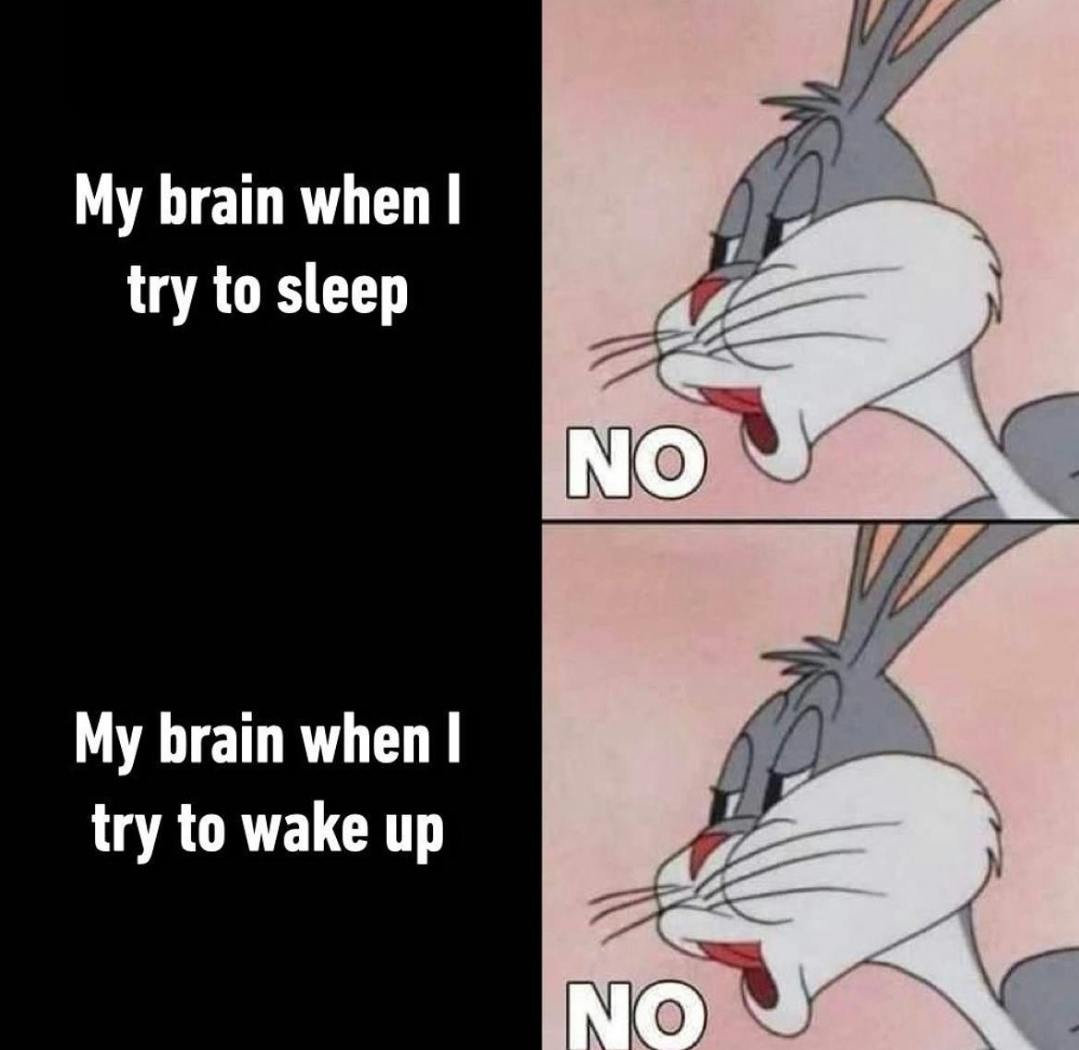
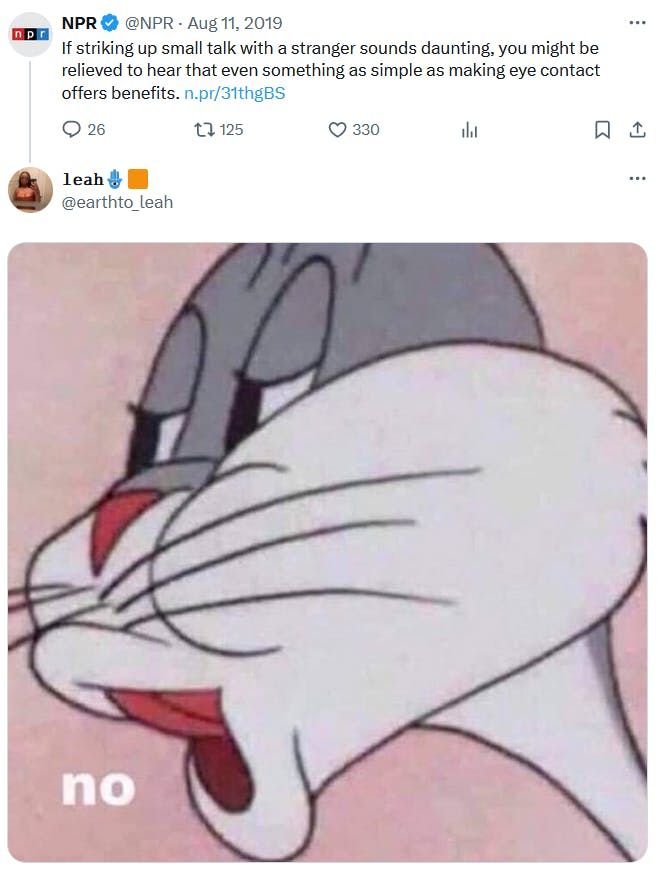
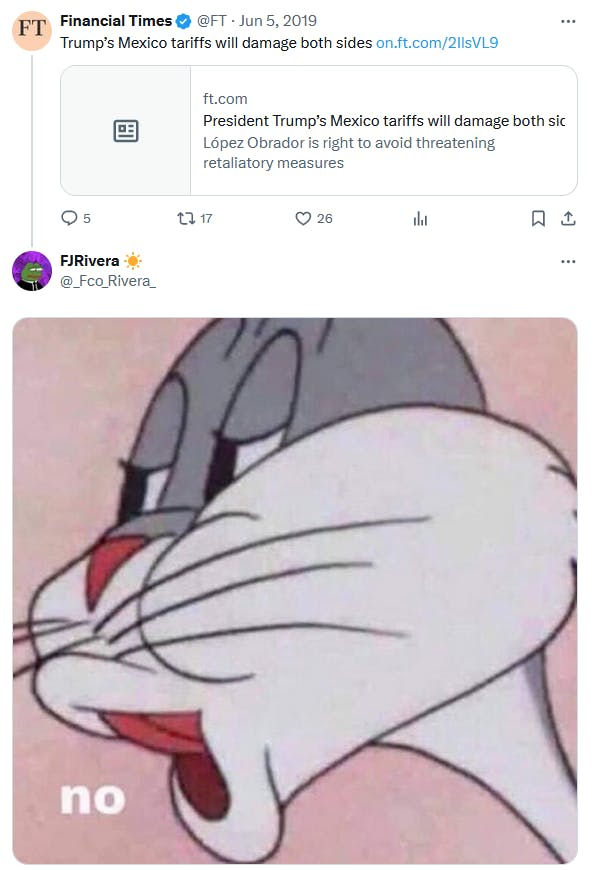
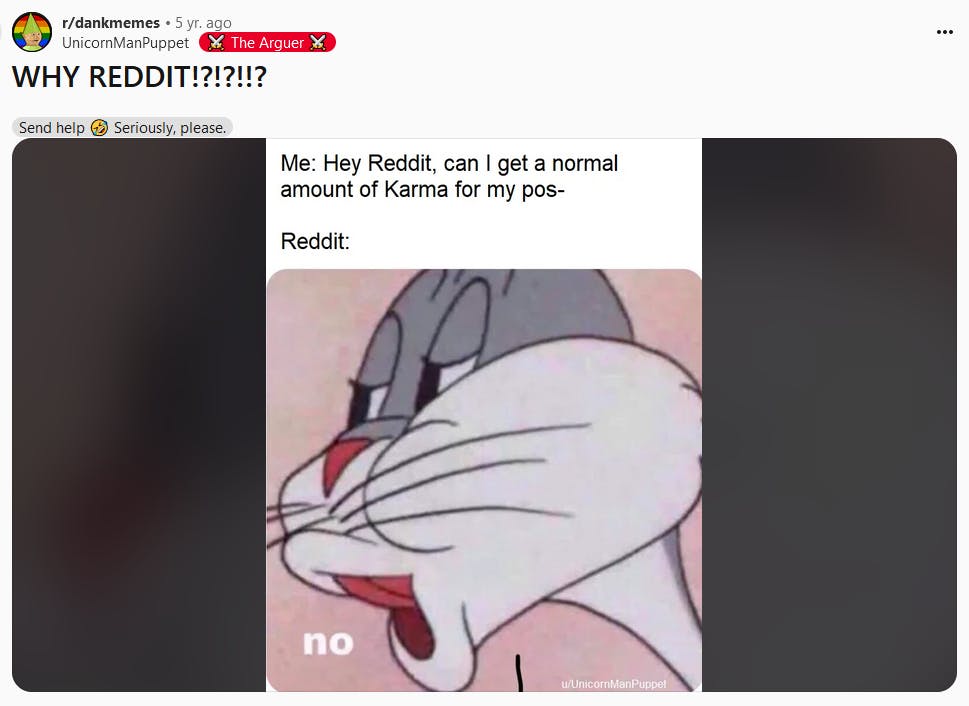
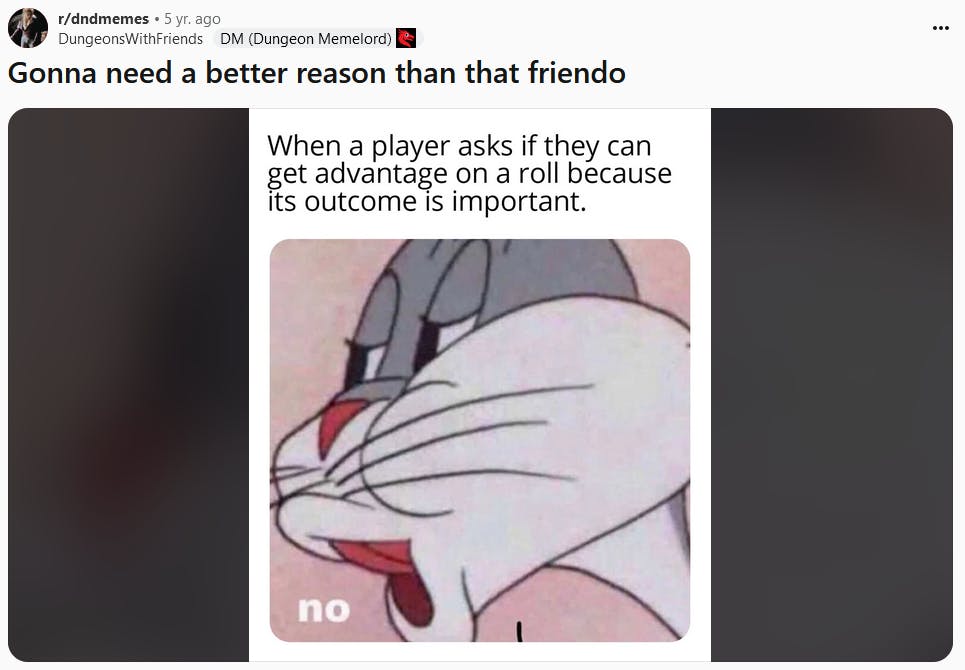
Related memes:
- The ‘no meme’ (for when you need help you say ‘no’)
- Peppa Pig hanging up the phone is the angry meme everyone can relate to
- The ‘Well yes, but actually no’ meme is here to help you explain things
- ‘Steamboat Willie, no!’: Memes of Disney’s original version of Mickey Mouse committing atrocities flood web after copyright expires
The internet is chaotic—but we’ll break it down for you in one daily email. Sign up for the Daily Dot’s web_crawlr newsletter here to get the best (and worst) of the internet straight into your inbox.

